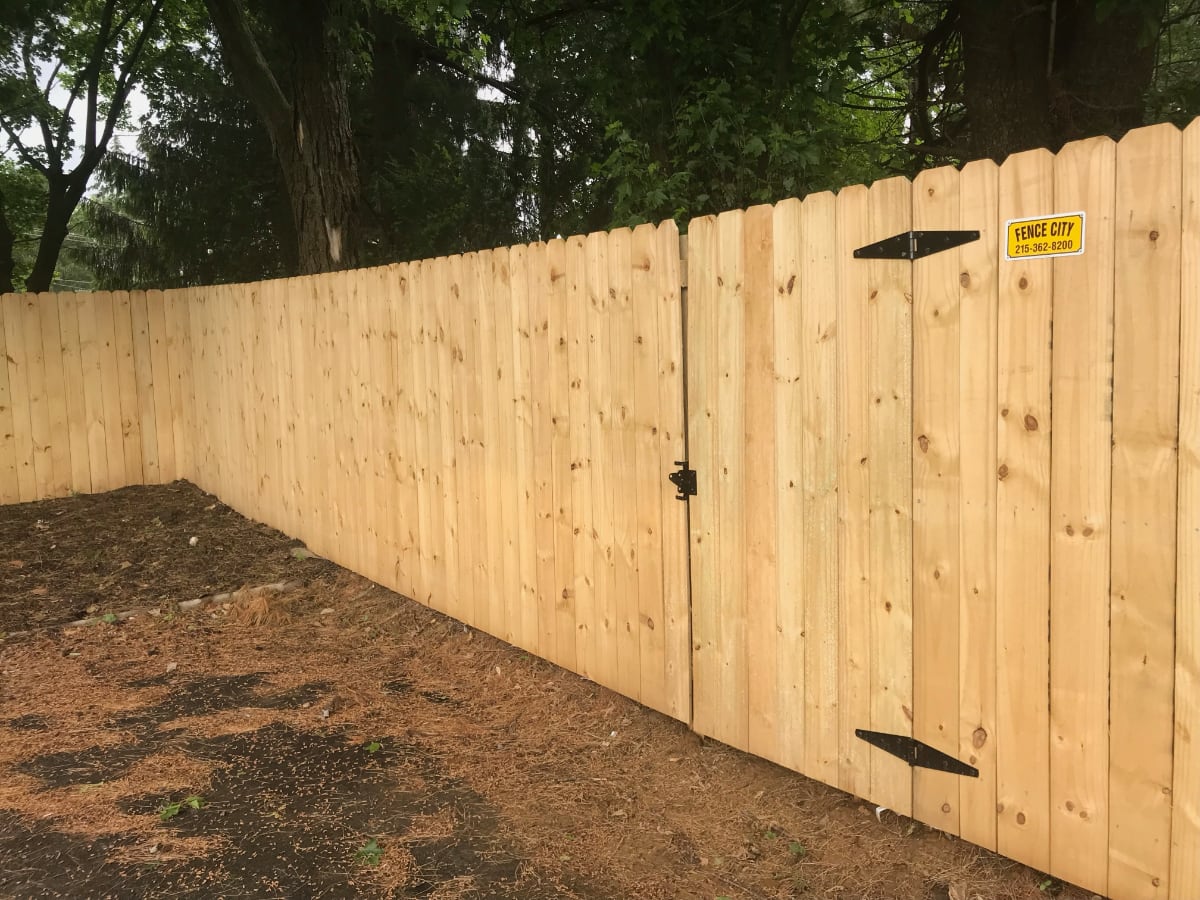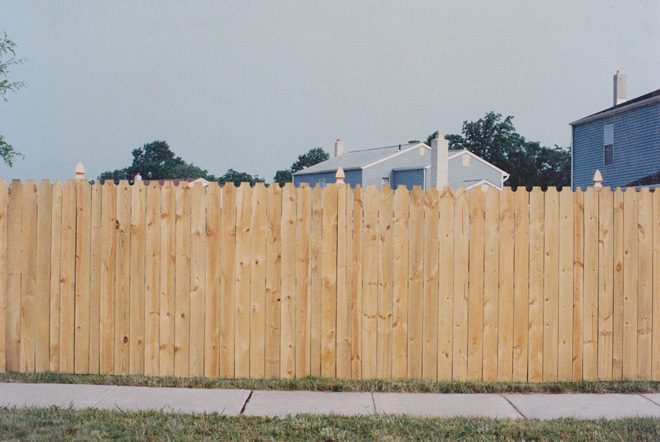Contact our Fence Experts: (215) 362-8200 info@fencecity.com
72 inch Dog Eared Solid Board - Pressure Treated

- 6 foot tall privacy fence
- 6 inch wide dogeared pressure treated lumber.
- 2" x 4" x 8' backing rails
- ring shank nail used in Mfg
Fence installation is available for this fence. Contact us to set up an appointment to have your fence installed by our professional fence installers.

Scroll down to see PRICING and more photos of this style.
LET OUR FENCE INSTALLATION EXPERTS GUIDE YOU
Contact us for more information about this fence
Email us at info@fencecity.com
Parts & Prices
Click here to see
Wood Fence
Prices
Colors

Wood
Specifications
Material: Wood
AssemblyType: Assembled
Height: 72 inches
Minimum Height: 72 inches at its lowest point
Picket Spacing: 0 inches between pickets
Grade: Residential
Structure: Solid
Style Number: FCW72DESB-PT
Days to Ship: Call for estimated ship date.
Photos Disclaimer
The photos shown may include optional details that can be added to a fence, such as ball caps, finials, puppy picket, short picket, circles, arched gates and more for an additional cost. Please read the description which gives you the specifications of the style of fence you have selected. No options are included in the section, post or gate price. All additional features are available on the parts page for purchase. Please note that some options must be ordered at the time of purchase and cannot be added at a later date.
More Photos Below









This 6 foot tall pressure treated custom solid board fence built by Fence City is among the strongest wood fence that we build. We use a 6 inch wide board and we nail it to a 2" x 4" x 8' back in Rail using 1-3/4" ring shank galvanized nail for extra strength and durability. This custom solid board Fence is the ultimate privacy fence made of wood. The fact that we build it with pressure-treated lumber and install it on pressure treated post we know that it will last for many many years. The uses for this fence or unlimited. It could be for security of your home or for privacy from your neighbors. This fence works great for containing your pets or fencing your yard for your children. Another benefit of this privacy fence is that it is legal for a swim pool because it meets the Boca code in most municipalities. Whether you're having this fence installed by Fence City or you are doing it yourself we do provide this fence in other designs besides dogeared. You can have it built in a scalloped - concave design or domed - convex design. Either way Fence City custom builds this fence for you for your individual project. If you would like further help making decisions on what fence works best for your fencing project please call the fence professionals at Fence City and we would be happy to work with you and most important make sure the fence that you were purchasing is right for your fencing needs.
We do not ship any vinyl, wood or chain link products they all must be picked up at our facility in Hatfield, PA, no exceptions